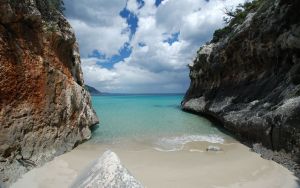Difference between revisions of "Sardinia candidate site"
| Line 6: | Line 6: | ||
Our group contributes a seismometer array to the Sardinia studies, which will allow us to characterize the seismic sources and seismic wavefield in detail especially for an accurate prediction of Newtonian noise from seismic fields. | Our group contributes a seismometer array to the Sardinia studies, which will allow us to characterize the seismic sources and seismic wavefield in detail especially for an accurate prediction of Newtonian noise from seismic fields. | ||
| − | The Einstein Telescope group at University of Pisa has set up a server for data storage and Jupyter notebooks, which | + | The Einstein Telescope group at University of Pisa has set up a server for data storage and Jupyter notebooks, which is being used to process seismic data acquired at the candidate site at the surface and underground [[https://etrepo.df.unipi.it:8000/ Razzano et al (2019)]]. |
== Infrasound measurements == | == Infrasound measurements == | ||
Revision as of 12:51, 18 April 2020
A team of scientist from Italy and other European countries is carrying out measurements of environmental fields (seismic, acoustic, magnetic) to assess the site's quality as a potential host of the future Einstein Telescope underground infrastructure. These measurements are accompanied by in-depth geotechnical, hydrogeological, ... studies, which are required to understand the feasibility, cost, and impact of Einstein Telescope at this site. The GSSI group participates in the acoustic and seismic characterization. GSSI is also involved in a socio-economic impact study of the Einstein Telescope at Sardinia through the Social Sciences department.
Seismic measurements
Our group contributes a seismometer array to the Sardinia studies, which will allow us to characterize the seismic sources and seismic wavefield in detail especially for an accurate prediction of Newtonian noise from seismic fields.
The Einstein Telescope group at University of Pisa has set up a server for data storage and Jupyter notebooks, which is being used to process seismic data acquired at the candidate site at the surface and underground [Razzano et al (2019)].
